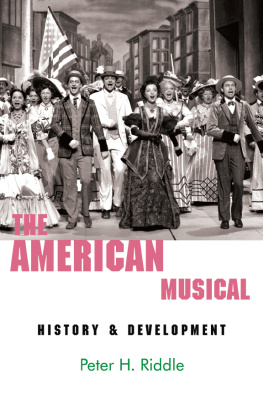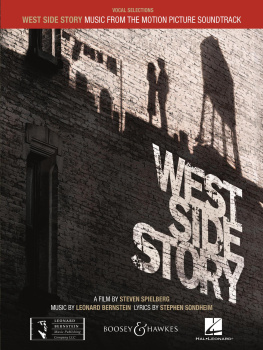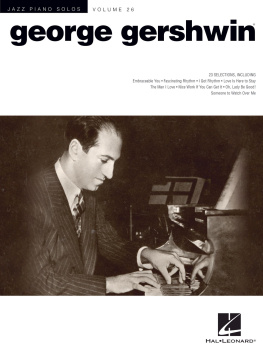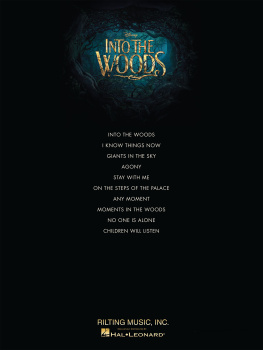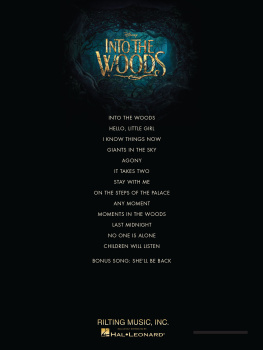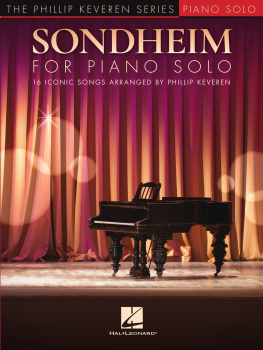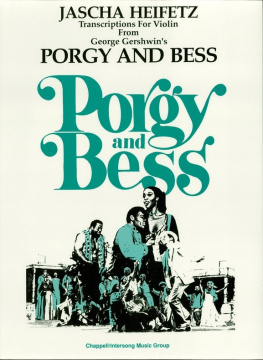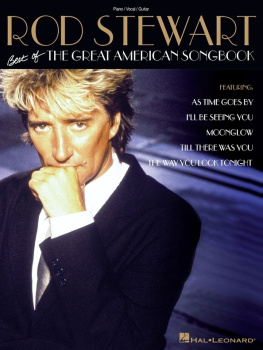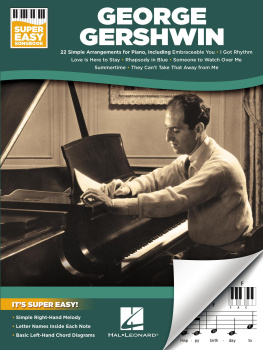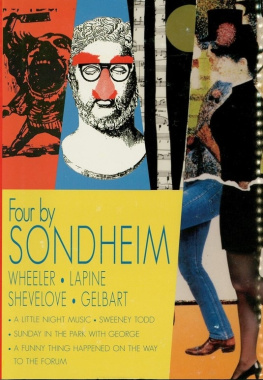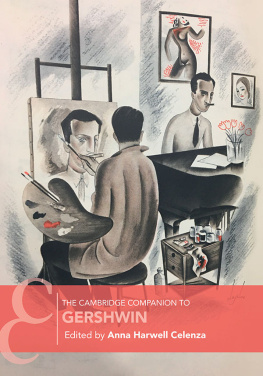Rob Kapilow - Listening for America: Inside the Great American Songbook from Gershwin to Sondheim
Here you can read online Rob Kapilow - Listening for America: Inside the Great American Songbook from Gershwin to Sondheim full text of the book (entire story) in english for free. Download pdf and epub, get meaning, cover and reviews about this ebook. year: 2019, publisher: Liveright, genre: Non-fiction. Description of the work, (preface) as well as reviews are available. Best literature library LitArk.com created for fans of good reading and offers a wide selection of genres:
Romance novel
Science fiction
Adventure
Detective
Science
History
Home and family
Prose
Art
Politics
Computer
Non-fiction
Religion
Business
Children
Humor
Choose a favorite category and find really read worthwhile books. Enjoy immersion in the world of imagination, feel the emotions of the characters or learn something new for yourself, make an fascinating discovery.

- Book:Listening for America: Inside the Great American Songbook from Gershwin to Sondheim
- Author:
- Publisher:Liveright
- Genre:
- Year:2019
- Rating:3 / 5
- Favourites:Add to favourites
- Your mark:
- 60
- 1
- 2
- 3
- 4
- 5
Listening for America: Inside the Great American Songbook from Gershwin to Sondheim: summary, description and annotation
We offer to read an annotation, description, summary or preface (depends on what the author of the book "Listening for America: Inside the Great American Songbook from Gershwin to Sondheim" wrote himself). If you haven't found the necessary information about the book — write in the comments, we will try to find it.
Rob Kapilow: author's other books
Who wrote Listening for America: Inside the Great American Songbook from Gershwin to Sondheim? Find out the surname, the name of the author of the book and a list of all author's works by series.
Listening for America: Inside the Great American Songbook from Gershwin to Sondheim — read online for free the complete book (whole text) full work
Below is the text of the book, divided by pages. System saving the place of the last page read, allows you to conveniently read the book "Listening for America: Inside the Great American Songbook from Gershwin to Sondheim" online for free, without having to search again every time where you left off. Put a bookmark, and you can go to the page where you finished reading at any time.
Font size:
Interval:
Bookmark:
Table of Contents
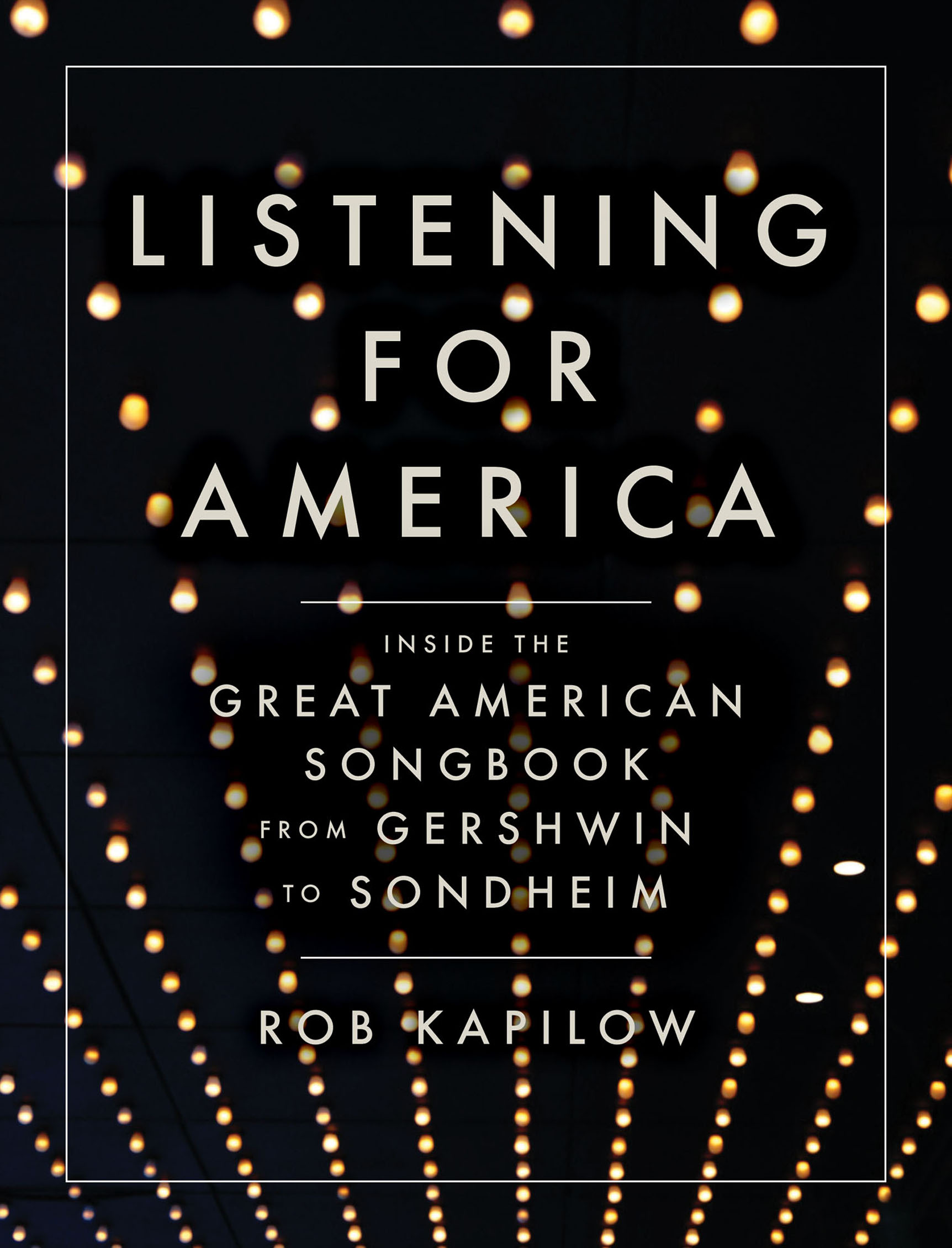

I n Thich Nhat Hanhs The Miracle of Mindfulness, he asks the reader to:
Consider the example of a table. The tables existence is possible due to the existence of... the forest where the wood grew and was cut, the carpenter, the iron ore which became the nails and screws, and countless other things which have relation to the table, the parents and ancestors of the carpenter, the sun and rain which made it possible for the trees to grow. If you grasp the tables reality then you see that in the table itself are present all those things which we normally think of as the non-table world. If you took away any of those non-table elements and returned them to their source... the table would no longer exist.
Similarly, Listening for America was made possible by an enormous number of non-book elements, without which it would never have come into being. On the simplest level, had my devoted and doggedly persistent literary agent, Henry Thayer, not believed so strongly in this book, I would have abandoned it before it even got started. He not only helped shape the overall concept for the book in its early stages, but he continually encouraged me to write something that would not only look at the American Songbook in purely musical terms but also in the context of the broader society and culture within which it arose and flourished. It was he who first believed (even before I did) that simultaneously exploring both musical and historical perspectives on this repertoire was not only possible, but essential.
I am fortunate that Henry found an equally enthusiastic and committed partner in this enterprise in the person of Michael Fauver, my brilliant editor at W. W. Norton/Liveright, without whom not a single sentence in this book would ever have been written. The care and effort that Michael put into reading every word of text and every measure of music was extraordinary. I cannot thank him enough for his consistently thoughtful, carefully crafted comments that were invariably accurate and to the point. Somehow, he managed to convey his thousands of corrections and suggestions with such unfailing enthusiasm for the project that I was never discouraged, only encouraged. I cannot imagine having a more perfect editor for this book, and I can never thank him enough for the magnificent work he did keeping me on track and positive over the past five years. Also at Liveright I am indebted to Bob Weil for his enduring support, as well as Marie Pantojan, Cordelia Calvert, Pete Miller, Nick Curley, Steve Attardo, David Bradley, Becky Homiski, Fred Wiemer, and Debra Nichols.
I am deeply grateful to two remarkable scholars. Robert Kimball, the eminent historian of the American musical theater and artistic advisor to the Ira and Leonore Gershwin Trusts and the Cole Porter Estate, carefully read all but the final chapters of the book. His comments and corrections were invaluable (though any remaining errors are exclusively my responsibility), and his overwhelmingly positive response as the books first outside reader meant more than I can say. In addition, his enthusiasm for a Cole Porter program I did at Lincoln Center in 2012 and his willingness to introduce me to several heads of the various estates involved in this project was a key factor in my deciding to move ahead. His support for the past seven years has been unwavering, and for that, as well as for his peerless scholarship, I am deeply grateful.
I was also fortunate to have Geoffrey Block, an equally brilliant and distinguished historian, read the later chapters of the book. His broad background, encyclopedic knowledge, and insightful comments were enormously helpful to me, and his thought-provoking remarks continually led me down new and exciting paths.
It has always been important to me that my books can be read, understood, and heard by anyone, regardless of whether or not they can read music. To that end, recordings of every example synced to scrolling notation appear online thanks to the technical wizardry of my extraordinary engineer, Spencer Shafter. His work has been invaluable in making this book accessible to everyone.
And of course, none of this website material would have been possible without the superb performances by my two wonderful singers, Michael Winther and Sally Wilfert, who recorded all of these examples with myself at the piano. Sally and Michael have been my partners for all of the American Songbook programs of the past fifteen years, and working with them brought these songs to life for me. I would like to thank them, not only for the enormous effort involved in recording the musical examples, but also for our decade-and-a-half long collaboration in exploring this material.
To include all of the musical examples in the book required getting permission from publishers, a lengthy process I could never have completed without Kathleen Karcher. Her diligence, persistence, and professionalism were, put simply, a godsend.
I would also like to thank my manager, Lee Prinz, who continually supported my work on this book even though it took me completely away from performing for months at a time, year after year. Without his understanding and selfless belief in the importance of the project, I would never have been able to put aside the time necessary to finish it.
Finally, and perhaps most importantly: the audiences at all of my American Songbook What Makes It Great programs. From the moment I began to deconstruct this repertoire at Lincoln Center, it was the audiences astonishment at discovering how much they had missed in songs they had heard all of their lives that drove me to write Listening for America. As they discovered, along with me, the riches of this quintessentially American repertoire, their enthusiasm drove me to dig deeper and research further. Without these first respondersthese listeners who first helped bring this music to life for methis book would never have been written. Thank you.
ALSO BY ROB KAPILOW
All You Have to Do Is Listen: Music from the Inside Out
What Makes It Great? Short Masterpieces, Great Composers

T he 1946 film version of Jerome Kerns life, Till the Clouds Roll By, is essentially told in flashback form. It begins on the opening night of Show Boat, Kerns legendary 1927 musical, with a magnificent, if truncated, Readers Digest version of the premiere. After recounting his preShow Boat career for nearly two hours, the flashback segment of the film ends with a melodramatic scene in which Kern, lost in thought, walks along the banks of the Mississippi River in Memphis, Tennessee. As the camera focuses more and more closely on Kerns face, he says with increasing intensity and emotion:
I walked along the river that night with the river wind in my face and the taste of it on my lips, and I stood there listening.
A tiny scrap of Ol Man River is heard murkily in the low brass. The music of, You an me, we sweat an strain, body all achin an racked wid pain.
A sudden excitementthrilling for melistening to the sound of a river that makes its way right through the heart of America. And the voice of that river with the laughter and the tears and the joys and sorrows and the hopes of all Americas people.
The musical fragment starts to clarify itself and rises in pitch, louder now, as if the beginnings of an idea are forming in Kerns imagination. Suddenly a majestic show boat with smoke billowing out its smokestacks floats into the framea riverboat that looks suspiciously like Capn Andys
Next pageFont size:
Interval:
Bookmark:
Similar books «Listening for America: Inside the Great American Songbook from Gershwin to Sondheim»
Look at similar books to Listening for America: Inside the Great American Songbook from Gershwin to Sondheim. We have selected literature similar in name and meaning in the hope of providing readers with more options to find new, interesting, not yet read works.
Discussion, reviews of the book Listening for America: Inside the Great American Songbook from Gershwin to Sondheim and just readers' own opinions. Leave your comments, write what you think about the work, its meaning or the main characters. Specify what exactly you liked and what you didn't like, and why you think so.

